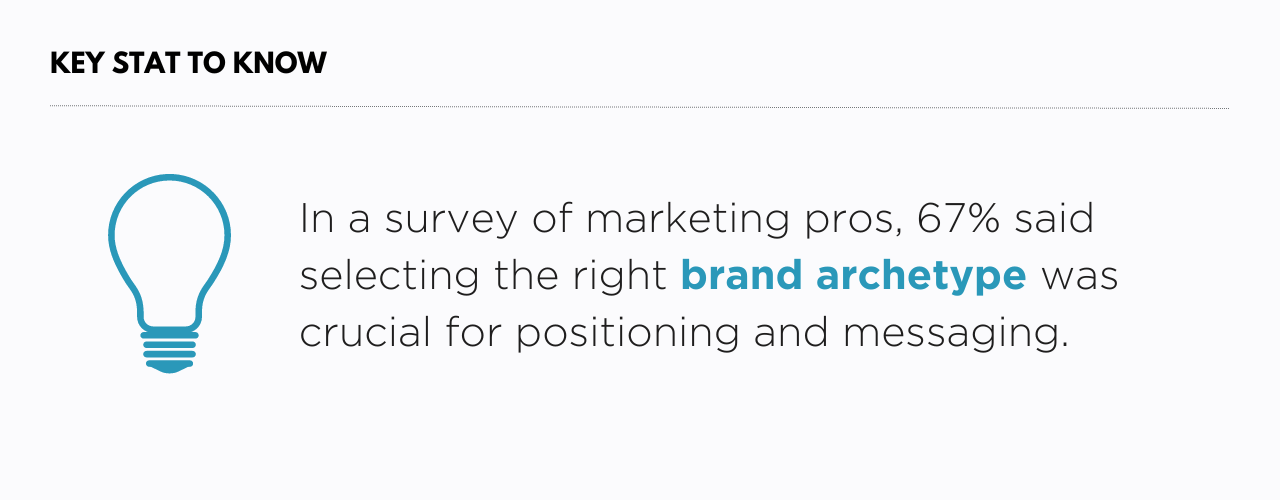
Key Takeaways 🔥
- Archetypes Shape Brand Stories: Understanding the difference between customer and brand archetypes is crucial for brand storytelling. They represent ideal customers and influence their purchasing decisions. Archetypes help define, understand, and engage a target audience by aligning brand values with customer characteristics.
- Archetypes Foster Emotional Connections: Each brand archetype encapsulates the essence of a brand and facilitates an emotional bond with audiences. Different archetypes evoke distinct emotions, making it vital to choose the one that aligns best with your brand’s values and audience’s expectations.
- Customer Archetypes vs. Buyer Personas: While customer archetypes provide a symbolic perspective of your audience, buyer personas are detailed and data-driven, offering actionable insights for marketing. It’s essential to differentiate between the two as they serve different purposes in understanding and targeting audiences.
- Brands Can Embrace Multiple Archetypes: While most brands align with a single archetype, some benefit from adopting multiple archetypes to convey a comprehensive brand message. For instance, LEGO embodies the Creator and Explorer archetypes, allowing them to connect with a broader audience.
- Perception Misalignment Can Be Problematic: A potential issue with archetypes is the misalignment between a brand’s self-perception and how customers perceive it. Understanding and aligning with the audience’s perception ensures a stronger brand identity and more effective marketing messages.
- Archetypes vs. Segmentation: Customer archetypes offer a high-level understanding of audience motivations, while segmentation provides a detailed, data-driven view of customer groups. Combining these approaches allows for a more comprehensive understanding of the audience and more effective marketing strategies.
- Archetypes in B2B Tech Brands: The impact of brand archetypes isn’t limited to consumer brands; they’re also crucial for B2B tech brands. Adopting the right B2B brand archetype allows tech companies to differentiate themselves, build stronger relationships with buyers, and convey compelling stories.
A customer archetype is an abstract representation of a customer segment. A brand archetype is a set of characteristics and values representing a brand.
Why this matters: Knowing the difference between a customer and brand archetype and where it fits into your brand story is essential. Archetypes represent your ideal customers and can impact their buying decisions.
A Quick Reference Guide to Brand Archetypes
Customer and brand archetypes can be used together to effectively define, understand, connect, and engage a target audience by mapping brand values to the characteristics of a particular customer segment. This can help create a compelling and focused message that will resonate with this audience.
Table: Archetypes At A Glance
| Archetype | Description | Brand Examples |
|---|---|---|
| The Creator | Emphasizes creativity, originality, and innovation | Adobe, Lego, Crayola |
| The Sage | Prioritizes knowledge and expertise, promoting education, research, and self-reflection | Google, NPR, PBS |
| The Caregiver | Highlights selflessness, comfort, and guidance | Johnson & Johnson, The Salvation Army, Campbell’s Soup |
| The Innocent | Focuses on simplicity, optimism, and purity | Coca-Cola, Nintendo Wii, Fisher-Price |
| The Jester | Emphasizes entertainment, joy, and life’s simple pleasures | Skittles, Old Spice, Taco Bell |
| The Magician | Concentrates on mystery, transformation, and intellectual power | National Geographic, Discovery Channel, Absolut |
| The Ruler | Underscores ambition and power | Mercedes-Benz, Rolex, Microsoft |
| The Hero | Centered around courage, strength, and resilience | Nike, FedEx, BMW |
| The Everyman | Values solidarity, unity, accessibility, and approachability | Walmart, Ikea, Amazon |
| The Rebel | Characterized by defiance, risk-taking, and challenging the status quo | Harley Davidson, Diesel Jeans, Red Bull |
| The Explorer | Emphasizes adventure, discovery, and self-realization | Patagonia, REI, North Face |
| The Lover | Focuses on intimacy, connection, and passion | Victoria’s Secret, Chanel, Haagen Dazs |
Each archetype encapsulates a brand’s essence and facilitates an emotional connection with audiences. Different archetypes elicit distinct emotions, making it crucial to select the one that best aligns with your brand to leave a lasting impression on your audience.
In both cases, archetypes can be built using primary/secondary research data, audience analytics, landscape analysis, web, and first-party data.
What is a Customer Archetype?
Customer archetypes embody the qualities and motivations of target customer groups, enabling you to pinpoint your target audience, discern their needs and values, and devise effective communication strategies. These consumer archetypes present an abstract, symbolic perspective of your audience, comprising attributes and character traits that define your ideal target customer.
However, it is crucial to distinguish customer archetypes from audience or buyer personas, which rely on accurate data and insights rather than inspirational words.
There are 12 main archetypes commonly used in branding: Innocent, Explorer, Rebel, Hero, Creator, Jester, Lover, Caregiver, Ruler, Magician, Sage, and Everyman.
Example Archetype: The Sneakerhead
An example of a customer archetype might be a Gen Z sneaker enthusiast. This portrayal is intentionally vague and inspirational, setting the tone for a brand’s interaction with this segment rather than providing an exact representation.
In contrast, a buyer persona presents more detail and offers actionable insights to inform your digital marketing plan.
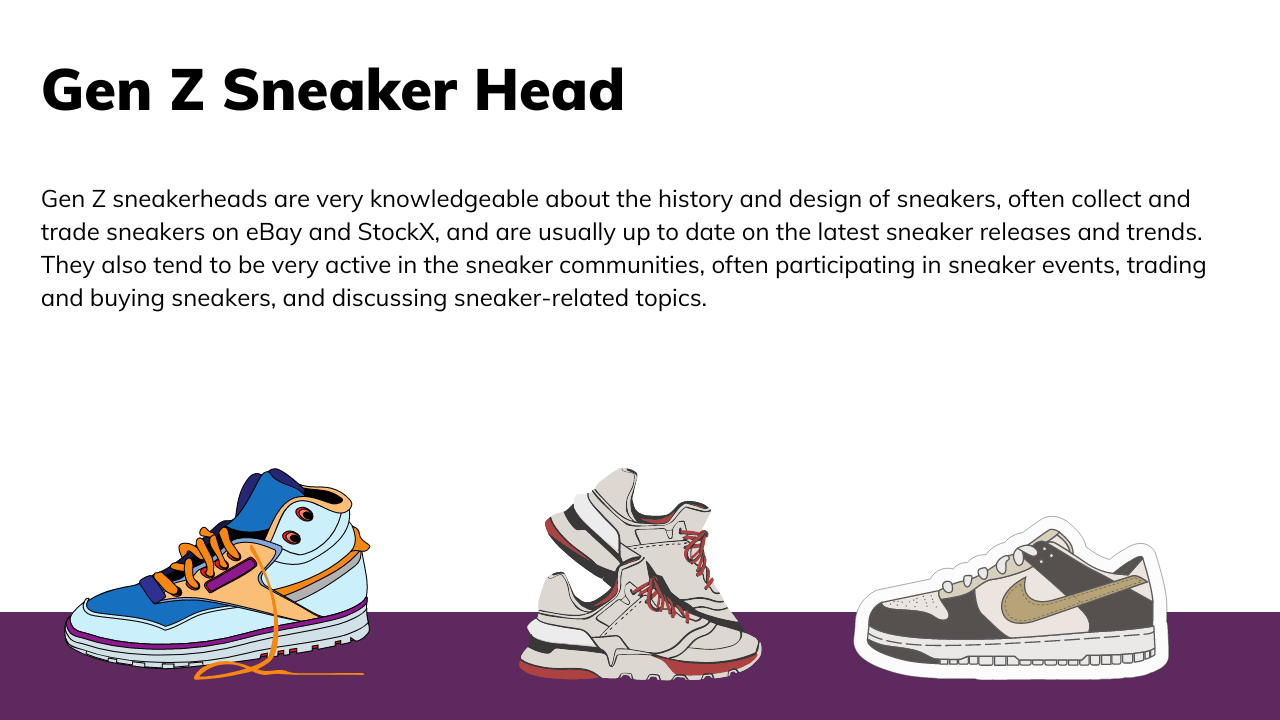
You’ll notice that this example is vague and inspirational. It’s meant to set the tone for how a brand can interact with this segment rather than be an exact representation of it.
Buyer Persona: More Details, More Data
This is an example of a buyer persona. You’ll notice it’s a lot more detailed and provides actionable insights that you can use to inform your marketing programs.
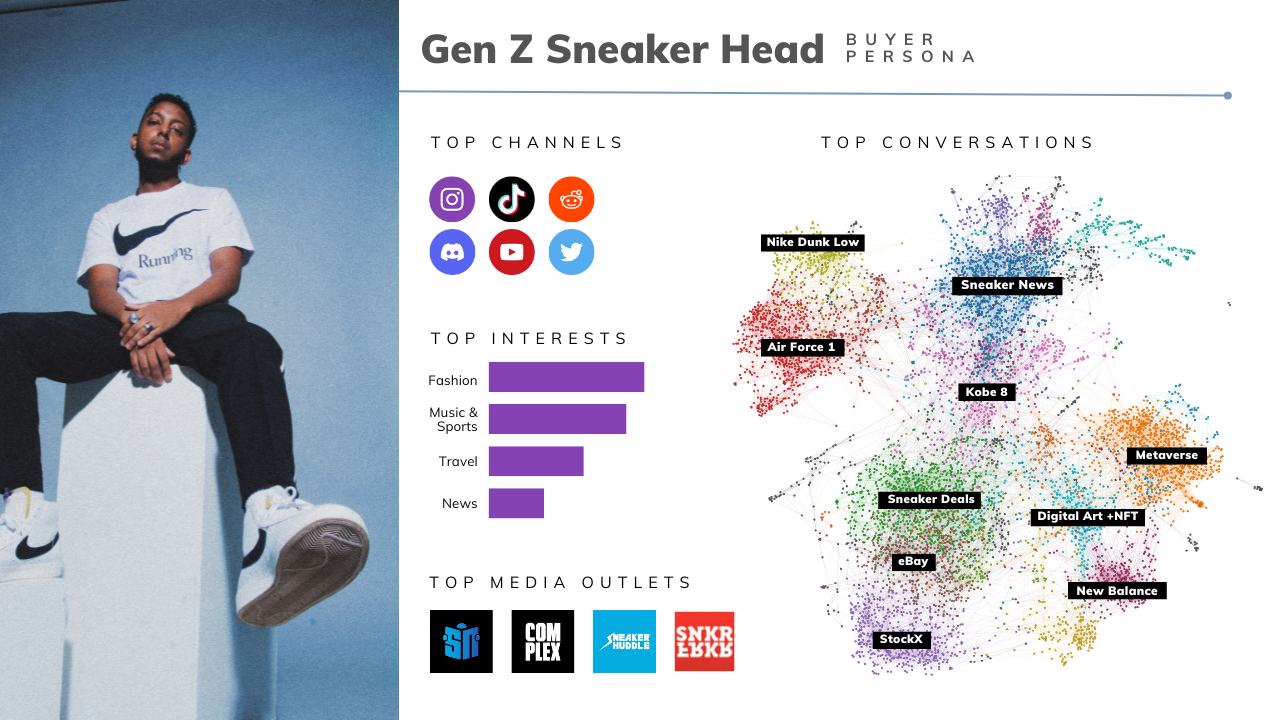
What is a Brand Archetype?
Brand archetypes diverge from customer archetypes in that they symbolize a brand’s core values, ideas, and emotions. These archetypes serve as a strategic framework for conveying the dominant personality of the brand across various channels through marketing and communication channels. Carl Jung developed brand archetypes, which marketers often use to establish a more coherent brand marketing.
Brand archetypes generally fall into one of twelve categories representing personality traits or characteristics like trustworthiness, creativity, leadership, and courage. These categories include the Caregiver, Rebel, Everyman, Explorer, Hero, Outlaw, Creator, Magician, Lover, Ruler, Innocent, and Sage archetypes. Each archetype encapsulates a brand’s essence fictional character and facilitates an emotional connection with audiences.
Brand Archetype Framework
This video was published in 2020, and it’s a good overview of brand archetypes and why they are important in brand-building.
Drilling Down on Carl Jung’s 12 Brand Archetypes
Below is a description of Carl Jung’s 12 brand archetypes with brand examples.
The Creator Archetype
Creator Archetype: Brands such as Adobe, Lego, and Crayola exemplify the creator archetype, emphasizing creativity, originality, and innovation. Creator brands are passionate about inventing and inspiring others to follow suit.
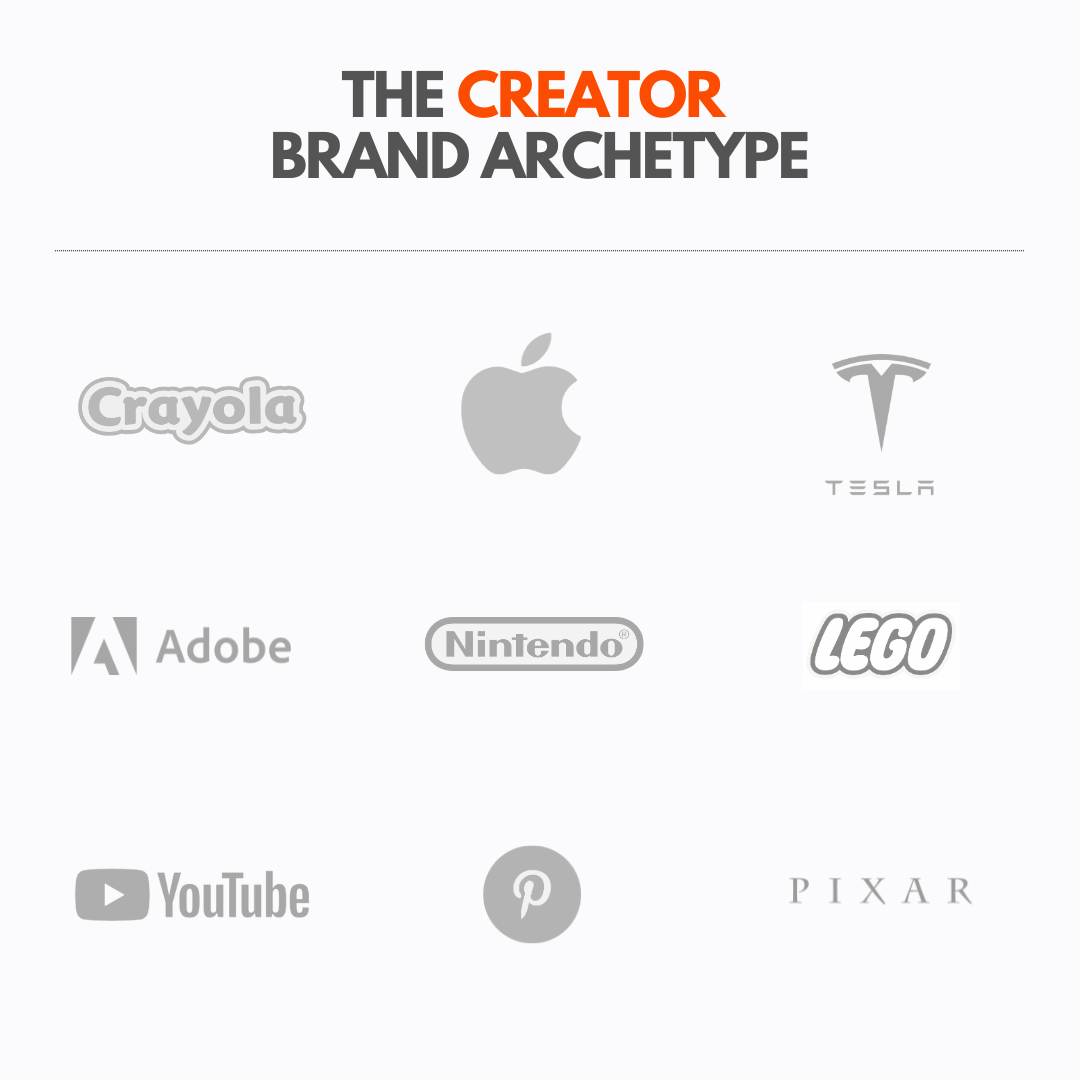
The Sage Archetype
The Sage Archetype: Sage brands like Google, NPR, and PBS prioritize knowledge and expertise, promoting education, research, and self-reflection as keys to understanding the world. This archetype revolves around transformation.
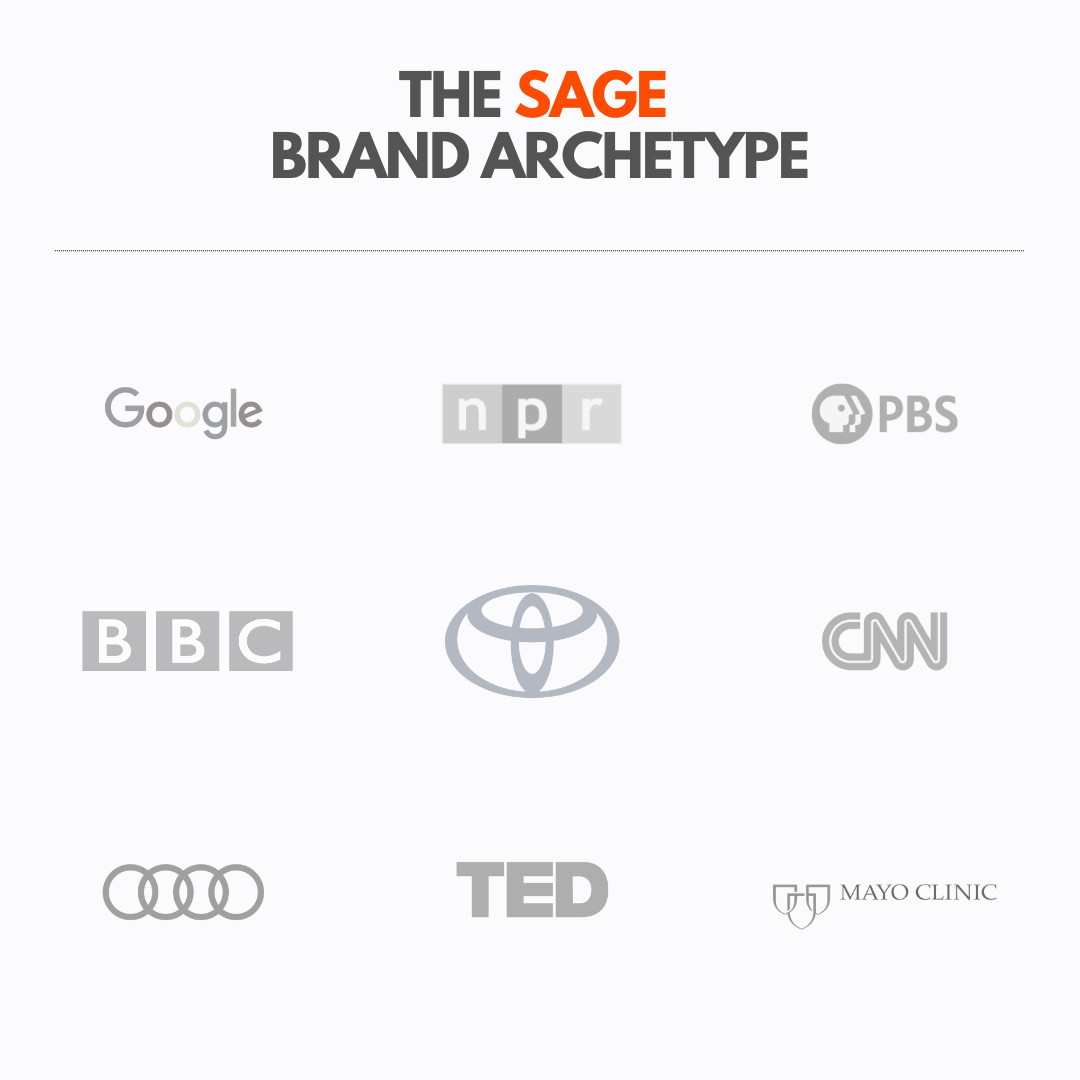
The Caregiver Archetype
The Caregiver Archetype: Represented by brands like Johnson & Johnson, The Salvation Army, and Campbell’s Soup, the caregiver archetype highlights selflessness, comfort, and guidance, demonstrating compassion and understanding toward those in need.
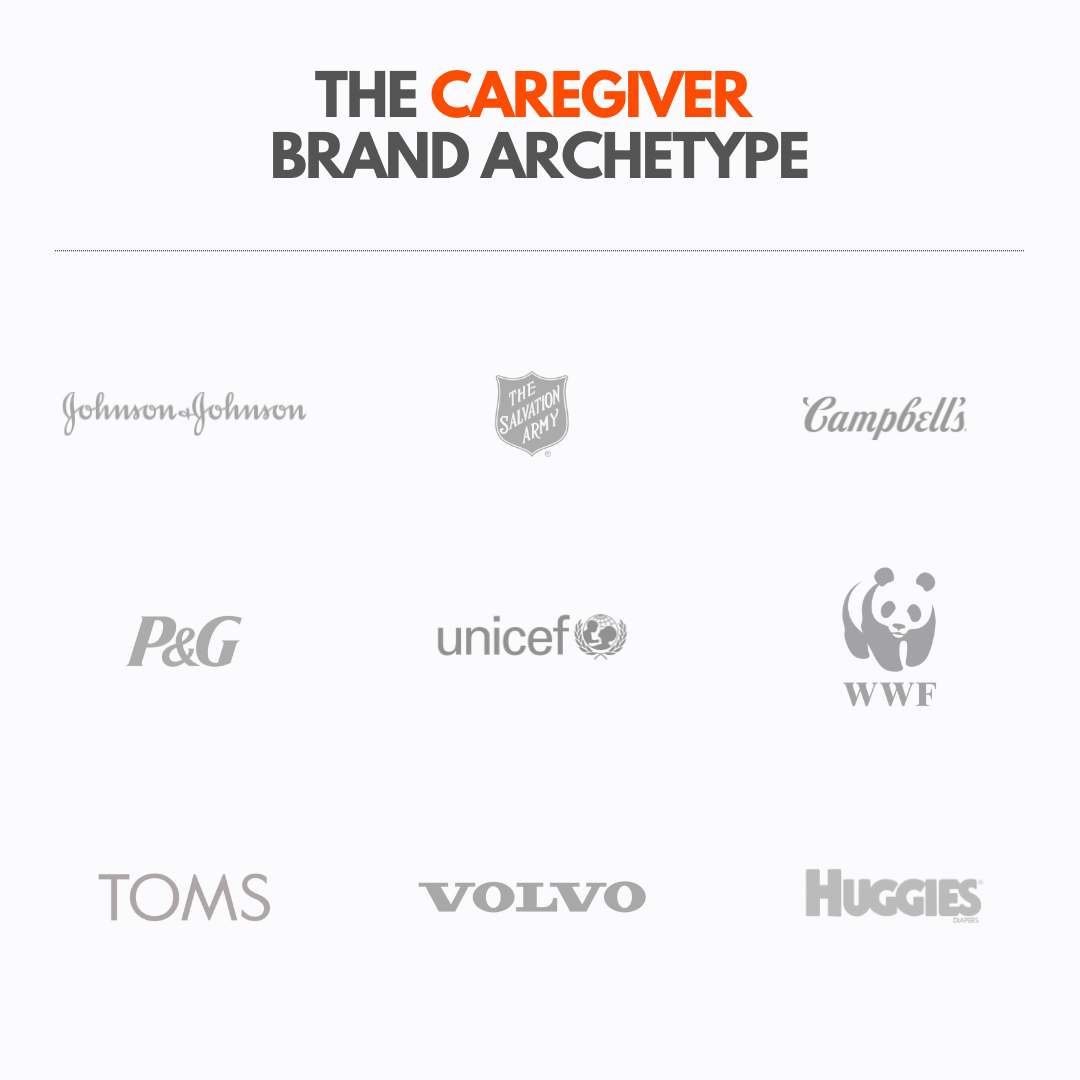
The Innocent Archetype
The Innocent Archetype: Innocent brands, such as Coca-Cola, Nintendo Wii, and Fisher-Price, focus on simplicity, optimism, and purity. This archetype encourages people to remain true to their values and pursue their dreams with passion and integrity.
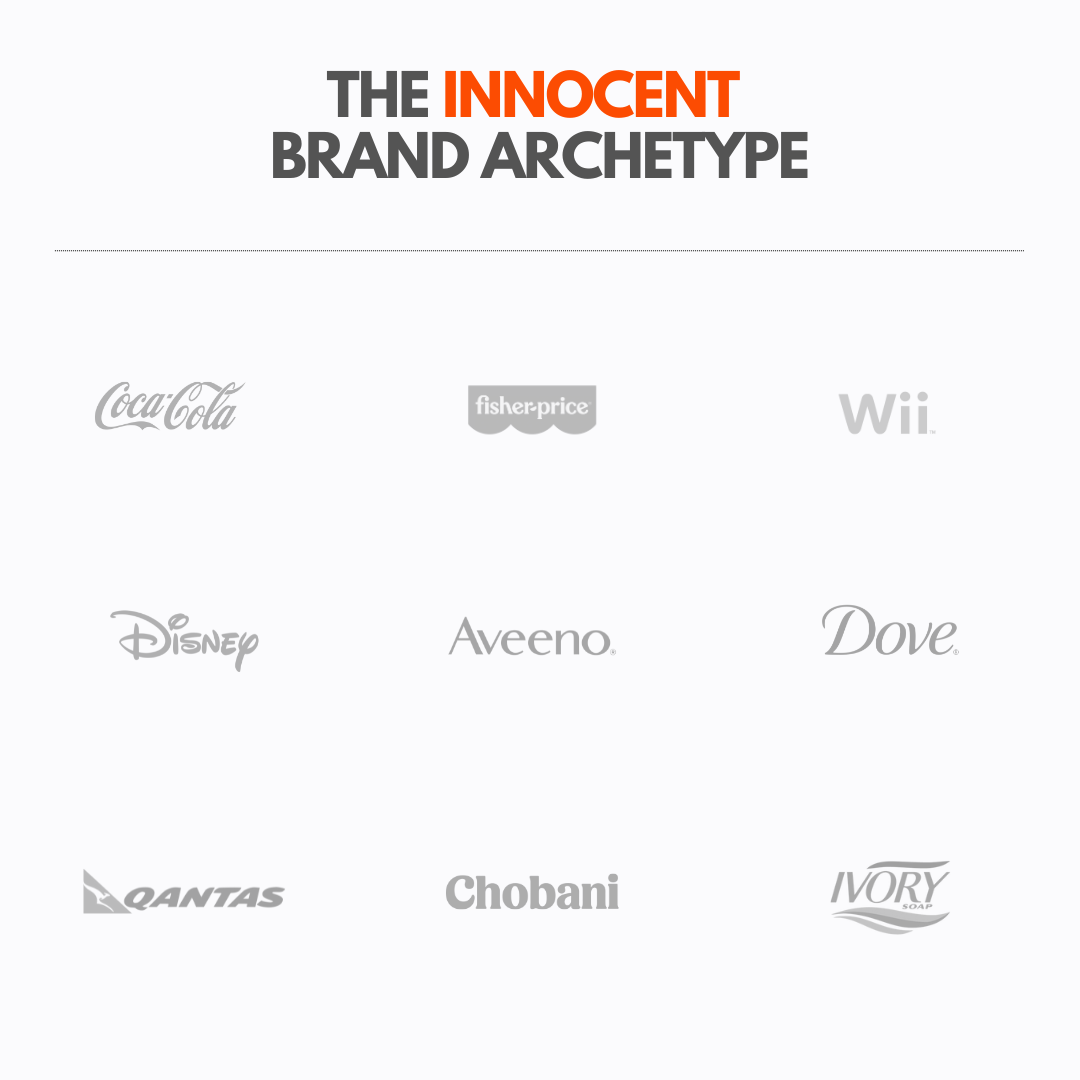
The Jester Archetype
The Jester Archetype: Skittles, Old Spice, and Taco Bell are jester brands that emphasize entertainment, joy, and life’s simple pleasures. This archetype aims to inspire people to enjoy life and have fun throughout their journey.
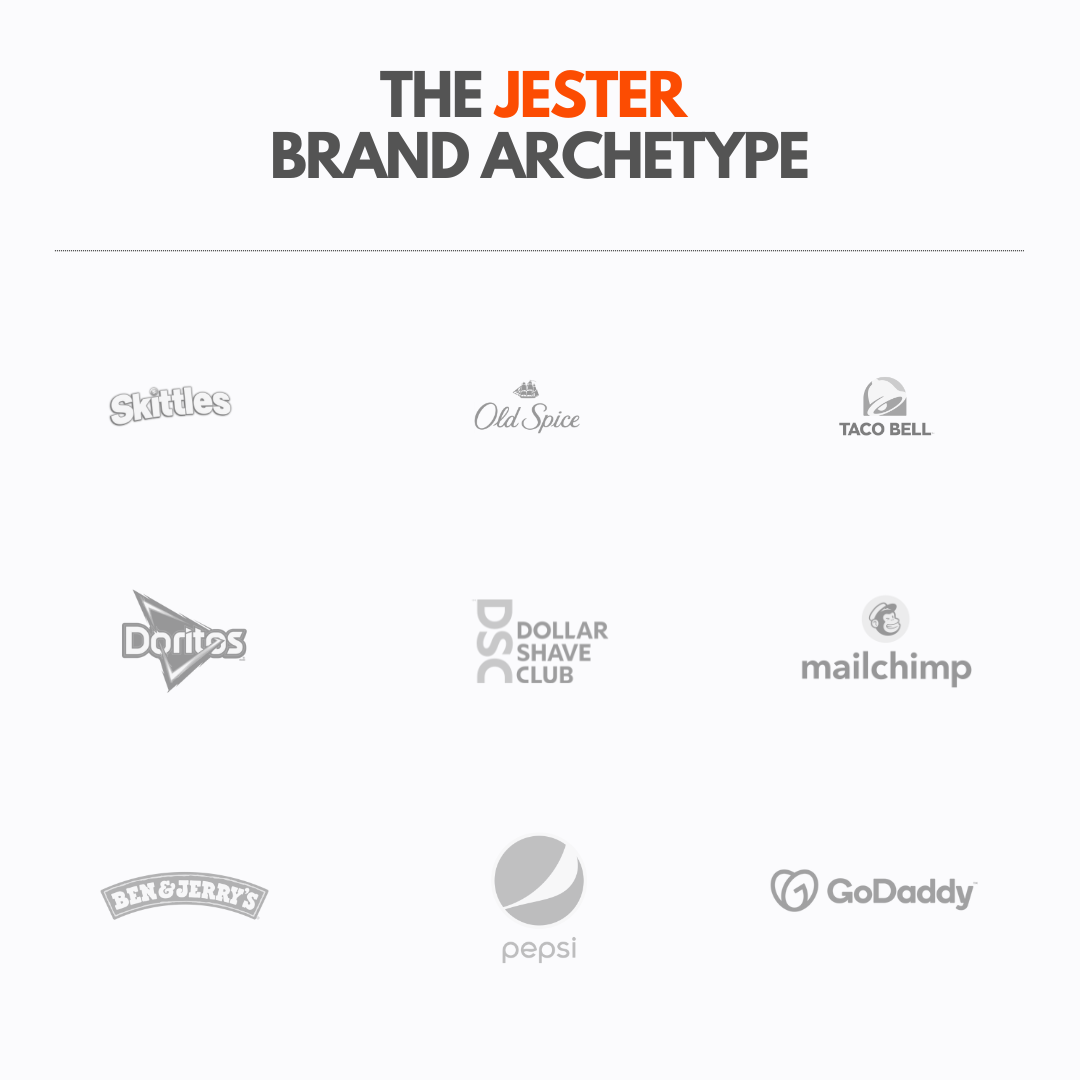
The Magician Archetype
The Magician Archetype: Brands like National Geographic, Discovery Channel, and Absolut represent the magician archetype, concentrating on mystery, transformation, and intellectual power. This archetype encourages exploration and the belief that anyone can make a difference.
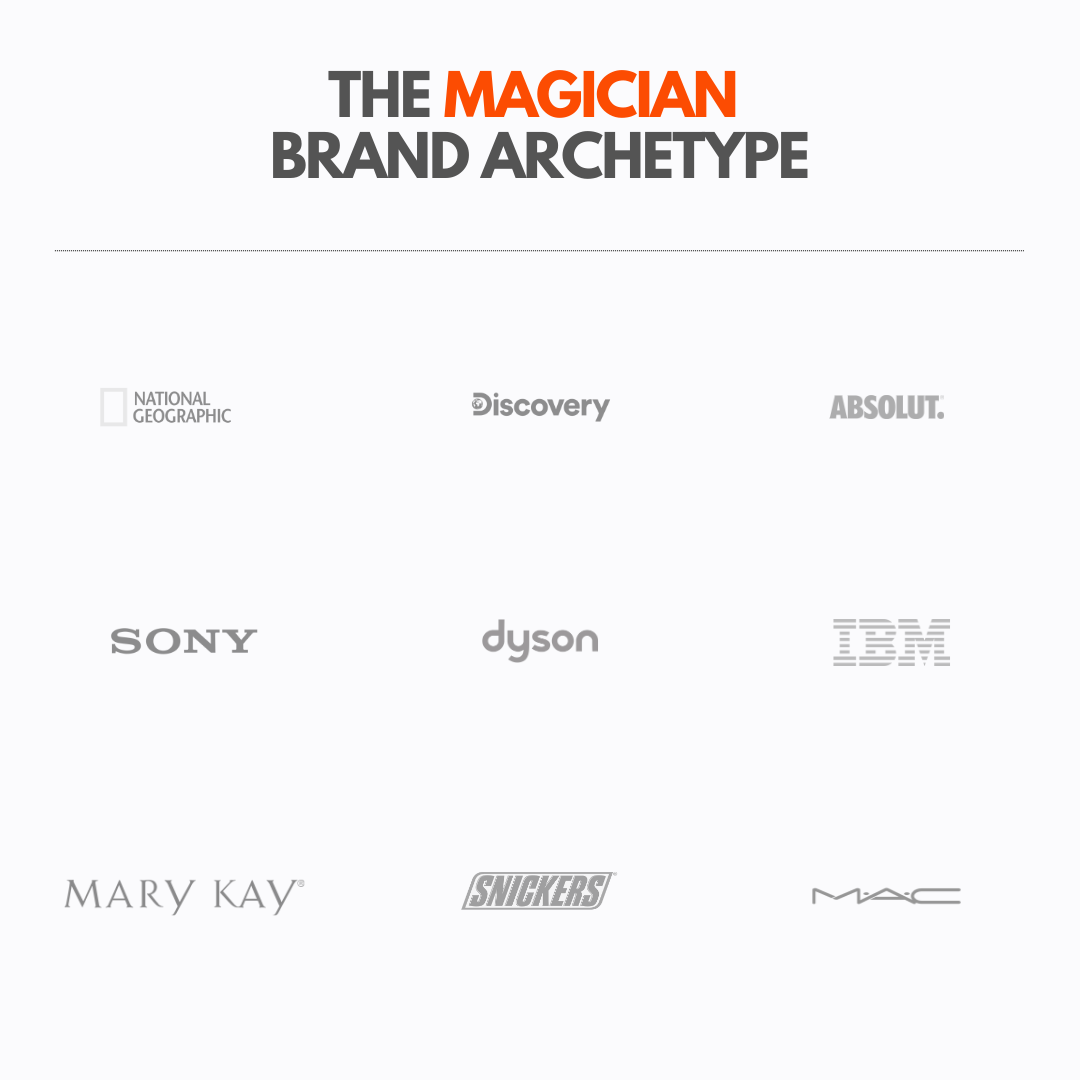
The Ruler Archetype
The Ruler Archetype: Mercedes-Benz, Rolex, and Microsoft exemplify the ruler archetype, which underscores ambition and power. This archetype seeks to inspire people to take control of their lives and strive for greatness.
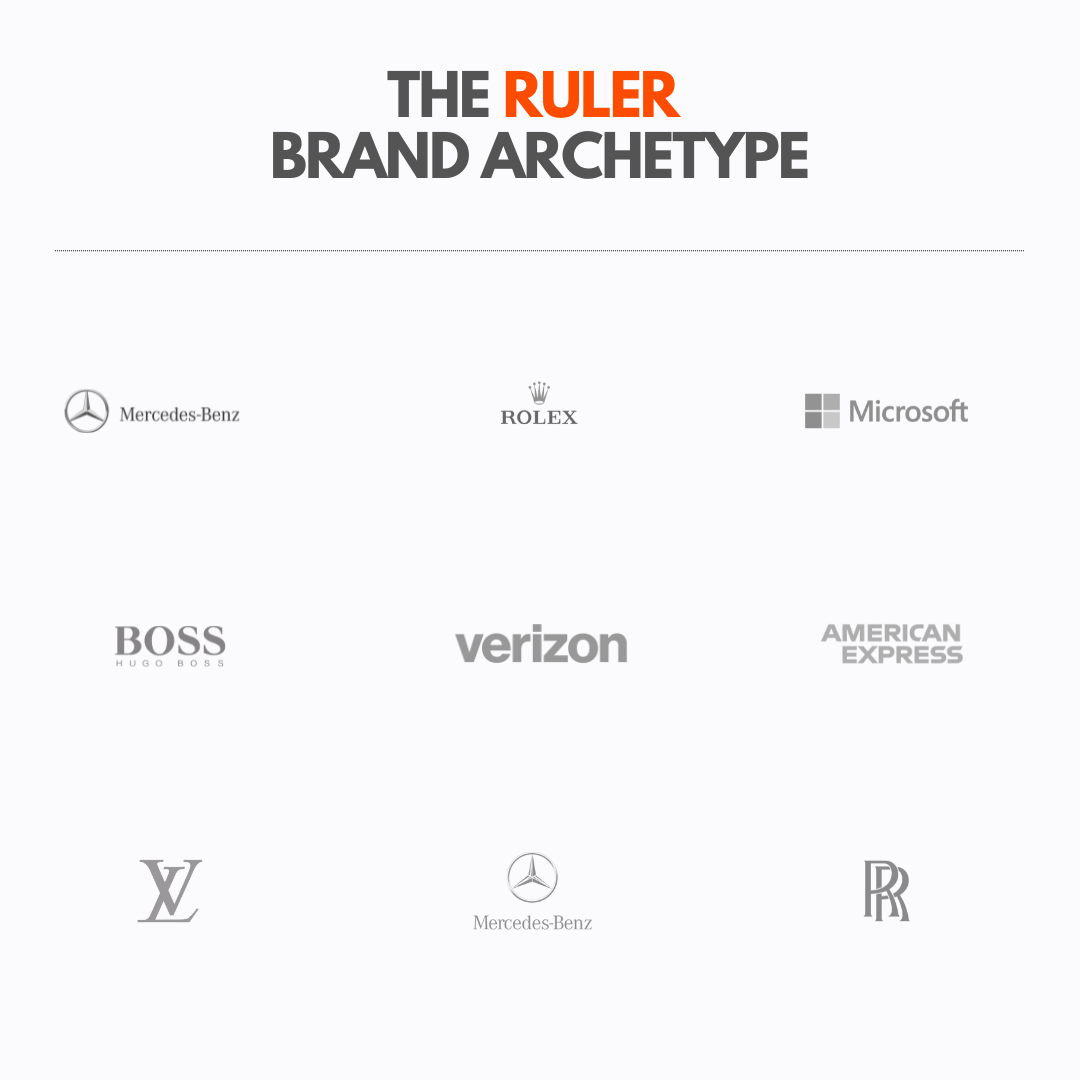
The Hero Archetype
The Hero Archetype: Brands such as Nike, FedEx, and BMW embody the hero archetype, which is centered around courage, strength, and resilience. Hero brands encourage people to be brave, strong, and selfless.
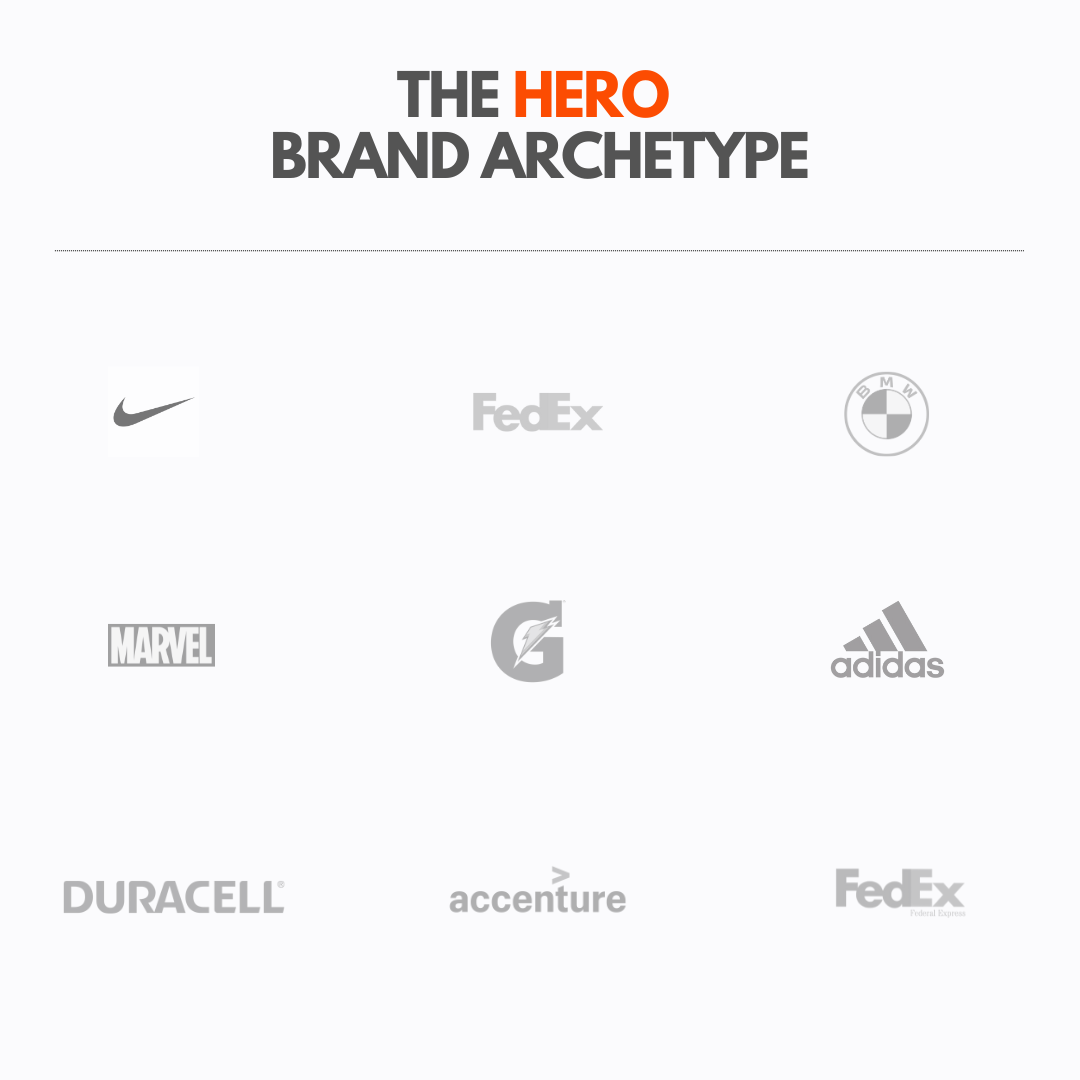
The Everyman Archetype
The Everyman Archetype: Walmart, Ikea, and Amazon represent the Everyman archetype, which values solidarity, unity, accessibility, and approachability. This archetype aims to foster inclusiveness for all.
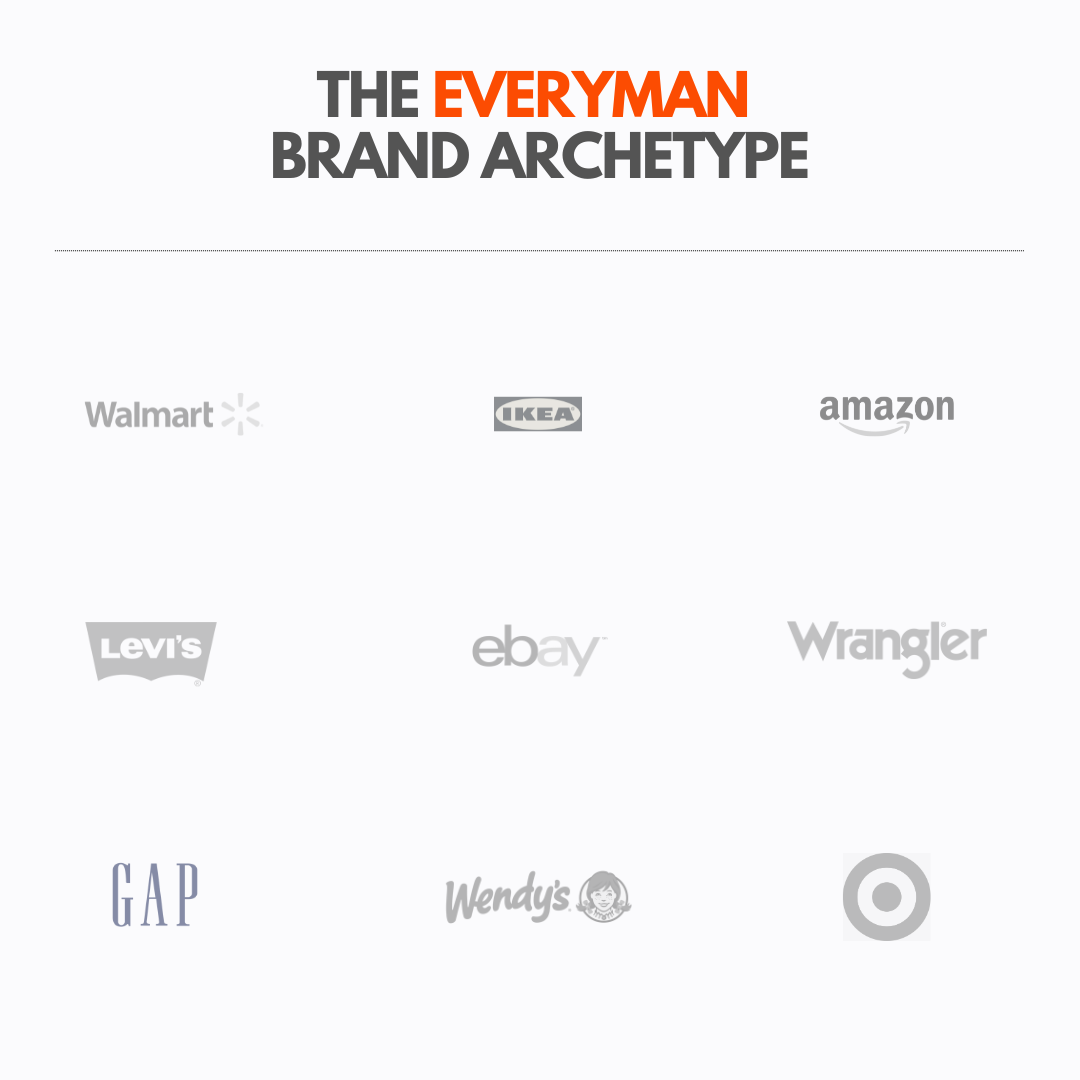
The Rebel Archetype
The Rebel Archetype: The rebel archetype, symbolized by brands like Harley Davidson, Diesel Jeans, and Red Bull, is characterized by defiance, risk-taking, and challenging the status quo. These brands are often seen as pioneers and innovators, distinguishing themselves from the competition.
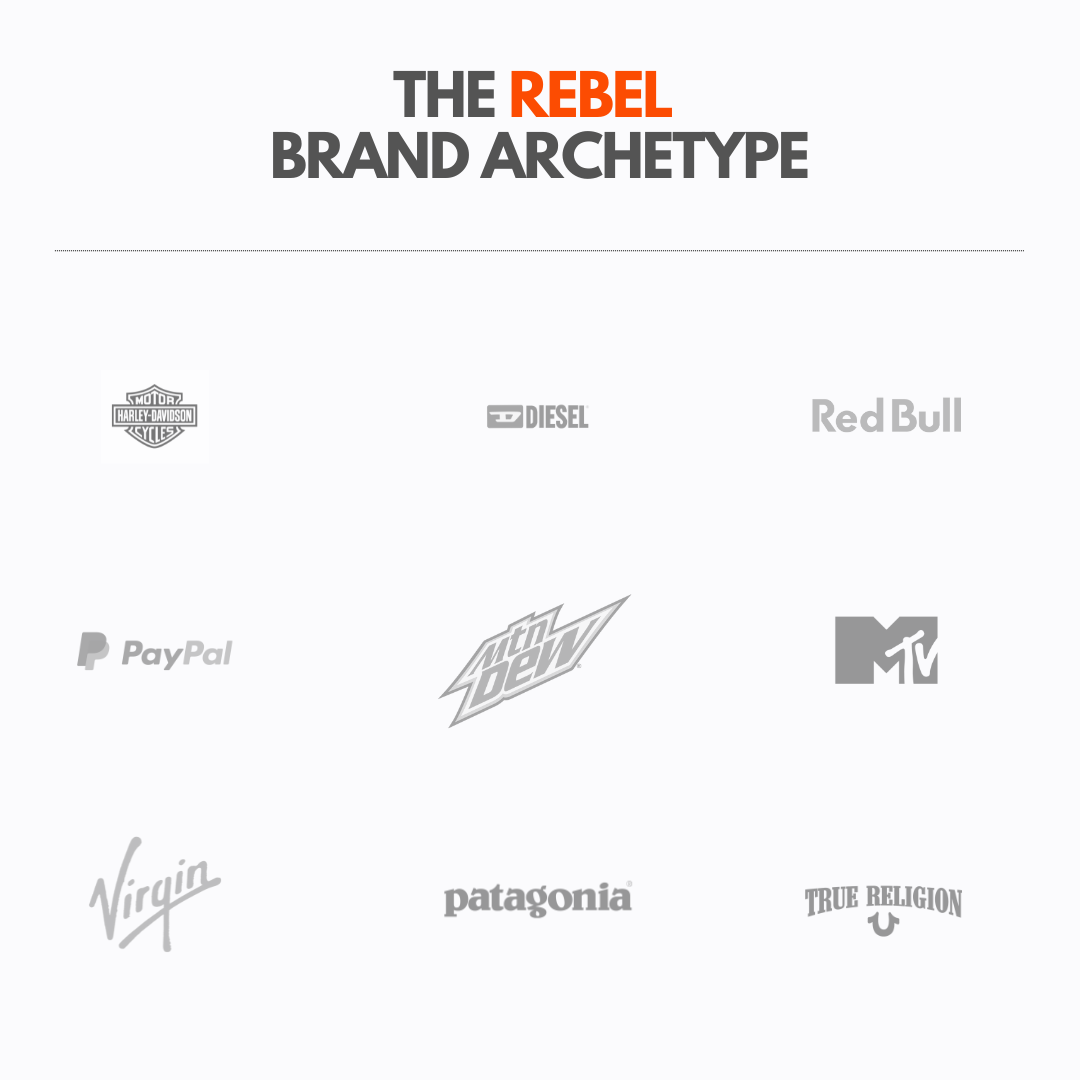
The Explorer Archetype
The Explorer Archetype: Emphasizing adventure, discovery, and self-realization, explorer brands such as Patagonia, REI, and North Face encourage others to push boundaries and embrace the unknown. This archetype inspires a life of exploration and uncharted experiences.
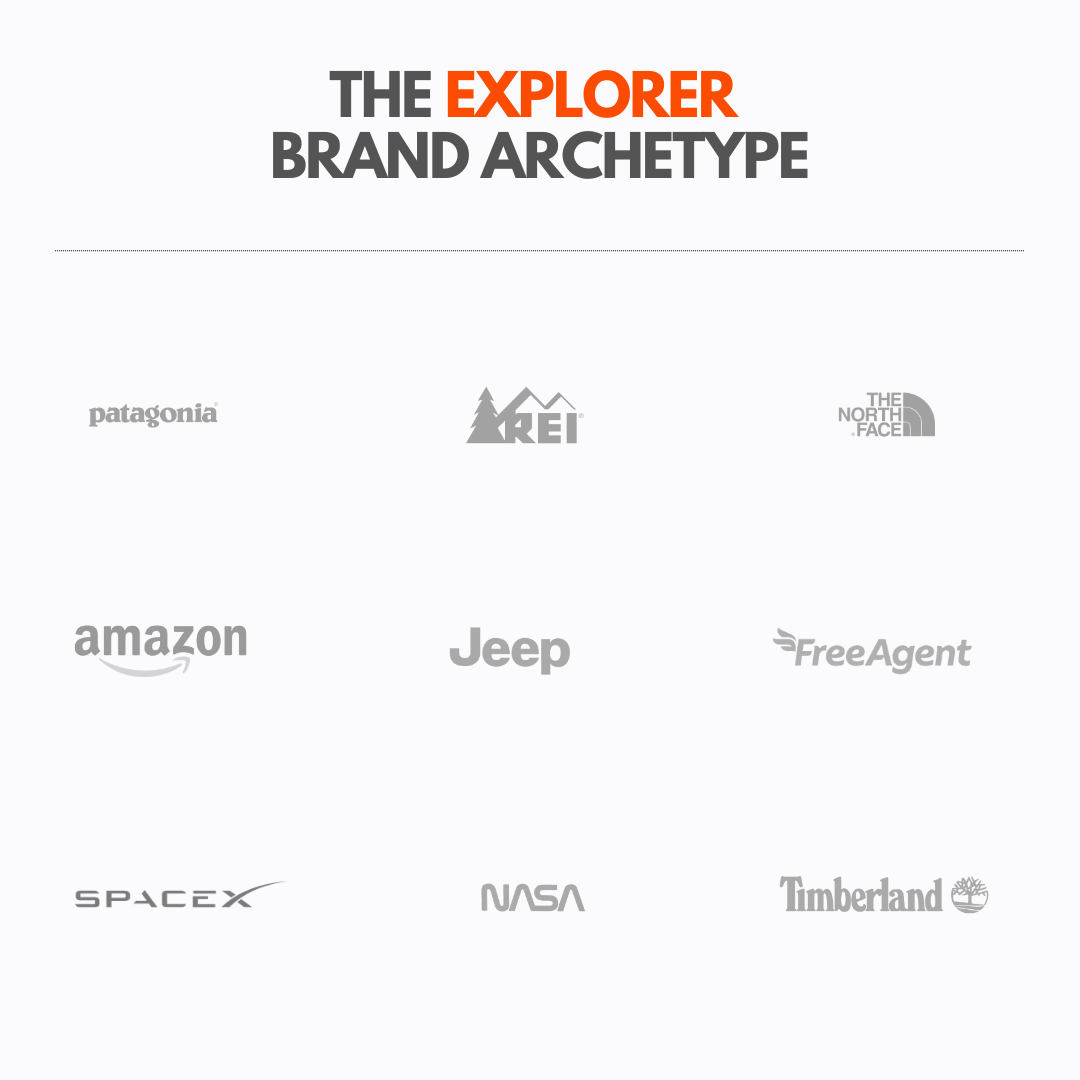
The Lover Archetype
The Lover Archetype: Brands like Victoria’s Secret, Chanel, and Haagen Dazs embody the lover archetype, focusing on intimacy, connection, and passion. This archetype promotes the importance of relationships, self-expression, and a sense of belonging.
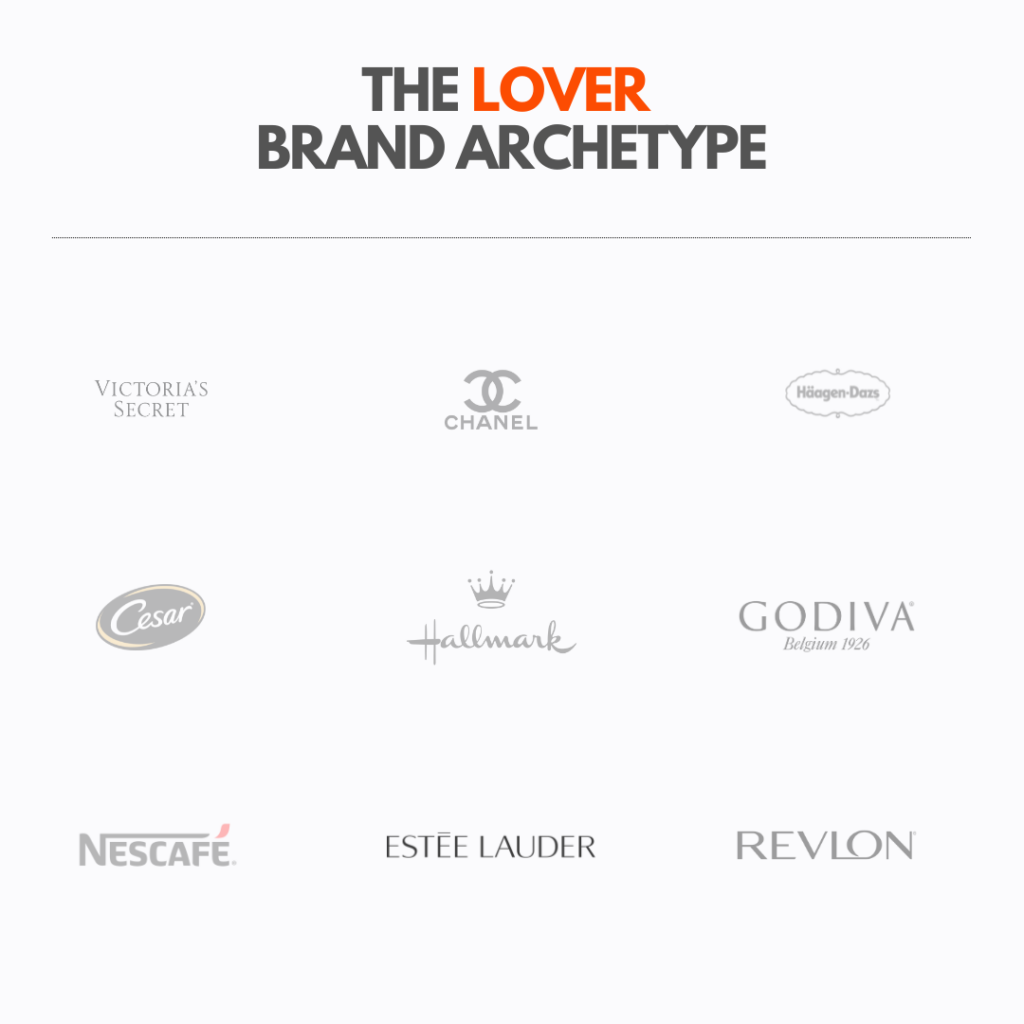
Archetypes are potent tools for crafting compelling and memorable brand identities. Different archetypes elicit distinct emotions, making it crucial to select the one that best aligns with your brand to leave a lasting impression on your audience.
Understanding each archetype and its associated values allows you to establish a robust and appealing brand identity that resonates with your target audience. Successful brand equity fosters associations between your brand and its principles underlying its archetype, resulting in a highly recognizable brand persona.
The Disconnect With Brand Archetypes
One issue with archetypes is the potential misalignment between your perception of your brand and your customers’ perception. For instance, a brand may view itself as a hero, while customers perceive it as a rebel. This discrepancy can lead to confusion and frustration when marketing messages fail to match your ideal customer expectations.
To resolve this issue, take the time to comprehend how your audience perceives your brand and refine your brand personality archetype to reflect their perception better. Doing so will help you develop a more robust brand identity and ensure a stronger alignment between your brand portrayal and customers’ experiences.
Brand Archetypes vs Buyer Personas
Brand archetypes and buyer personas are essential in shaping your marketing strategy; however, they differ significantly in their purpose, focus, and application. Delving into their unique characteristics and functions will help you utilize each tool effectively and create a cohesive marketing approach.
On the one hand, brand archetypes symbolize your company or brand’s core values, emotions, and ideas. They provide a template for consistently conveying your brand’s identity across various platforms, such as advertising and packaging. By aligning your brand with one of the twelve primary archetypes, you establish an emotional connection with your target audience, fostering a memorable and impactful brand persona.
Exploring the Differences
For instance, the Hero archetype represents courage, strength, and resilience, inspiring potential customers to associate these qualities with your brand. The goal is to evoke specific emotions that resonate with your audience, generating loyalty and affinity toward your brand.
Conversely, buyer personas are detailed representations of your ideal customers, built upon accurate data and insights. They delve into specific customer segments’ key demographics, preferences, and behaviors, enabling you to tailor your marketing strategy and messaging accordingly. By developing buyer personas, you can identify your target audience’s needs, desires, and values, devise effective communication strategies, and create customized content that resonates with them.
For example, a buyer persona might include information about a customer’s age, occupation, education level, interests, and purchasing habits. This information lets you align your marketing efforts with your audience’s preferences and expectations, ensuring you deliver relevant and appealing content.
Customer Archetypes vs Customer Segmentation
Customer archetypes and segmentation are valuable tools for understanding and targeting your audience, but their objectives, focus, and implementation differ. Exploring their unique attributes and purposes will enable you to effectively leverage each approach and create a comprehensive marketing strategy.
Consumer archetypes are abstract, symbolic representations of various customer groups, highlighting their motivations, characteristics, and needs. These archetypes help you identify your target market of customers, understand their values, and determine the most effective ways to communicate with them. By creating customer archetypes, you clearly understand your audience, guiding your brand’s tone and interactions with different segments.
Exploring the Differences
For instance, a customer archetype might embody a group of eco-conscious consumers, focusing on their shared values and concerns. This archetype provides a generalized framework to inform your marketing approach and messaging, ensuring you appeal to this specific audience’s sensibilities.
On the other hand, customer segmentation is a more precise and data-driven method of dividing your audience into smaller, homogeneous groups based on shared characteristics. You can segment your audience based on various factors, such as demographics, geographic location, purchasing behavior, or psychographics. Segmentation allows you to create targeted marketing campaigns and deliver tailored content that effectively addresses each segment’s unique needs and preferences.
For example, a customer segment might consist of young professionals living in urban areas with specific income levels and interests. This information lets you craft marketing messages and offers that cater directly to this group, improving engagement and conversion rates.
Customer archetypes provide a high-level, symbolic understanding of your audience’s motivations and values, while customer segmentation offers a more granular, data-driven view of distinct customer groups. By combining these approaches, you can better understand your audience, enabling you to create impactful marketing strategies and forge meaningful connections with your customers.
Can Brands Adopt More Than One Brand Archetype?
While it is common for brands to align with a single archetype, there are instances where embracing more than one archetype can be advantageous. By adopting multiple archetypes, marketers can create nuanced narratives that appeal to a broader range of consumers and convey a more comprehensive brand message. This approach enables companies to communicate multiple facets of their identity while remaining consistent and authentic.
Examples of Brands With More Than One Atchetype
One example of a brand successfully adopting multiple archetypes is LEGO. On the one hand, they embody the Creator Archetype, as their products encourage imagination, creativity, and self-expression.
However, the brand also aligns with the Explorer Archetype, inspiring adventure and discovery through its various themed sets, such as LEGO City, LEGO Space, and LEGO Friends. This dual-archetype alignment allows the brand to connect with a wider audience by appealing to the innate desire to create and the thirst for exploration.
Another brand that exemplifies the successful integration of multiple archetypes is Dove. Known for its body-positive campaigns, Dove primarily aligns with the Caregiver Archetype, promoting self-care and nurturing for all. Simultaneously, the brand also adopts elements of the Sage Archetype by positioning itself as a trusted source of information on beauty and personal care.
This blending of archetypes enables Dove to convey a well-rounded brand image that speaks to consumers’ emotional needs while establishing the brand as an authority in the industry.
At its core, the impact of brand archetypes extends far beyond consumer brands. It’s all about making authentic connections and sparking emotional associations readily applicable to B2B tech brands. By adopting the right B2B brand archetype, tech companies can differentiate themselves from competitors, forge solid relationships with buyers, and tell better stories than competitors.
FAQ
An example of a customer archetype is the “Busy Parent,” who prioritizes convenience, time-saving solutions, and products that cater to their family’s needs, making them more likely to respond to marketing messages highlighting these benefits.
A consumer archetype generally represents a consumer group with similar needs, desires, and motivations.
The role of the customer archetype is to help brands align marketing programs with insights into the target customer’s characteristics, emotional triggers, and decision-making processes.
It depends. The ideal customer archetype is the one that represents the most profitable, loyal, and satisfied group of customers for a brand.
Customer segment and archetype are related but not the same. A customer segment is a group of people categorized by demographics or behaviors. In contrast, a customer archetype dives deeper into the psychological and emotional aspects that drive the preferences and decision-making of that segment.
A customer archetype is essential because it helps businesses better understand their target audience’s needs, desires, and motivations. It leads to more effective and customized marketing, product development, and customer service strategies that foster loyal and profitable customer relationships.
Research your target audience’s demographic and psychographic traits to create a customer archetype. Conduct interviews and surveys and analyze existing customer data. Identify common patterns and characteristics and create a detailed profile that represents their needs, desires, goals, fears, and motivations. Then, refine and validate the archetype by analyzing customer feedback and making necessary adjustments, ensuring it accurately represents the target audience.
Louis Vuitton represents the Ruler archetype, known for luxury, exclusivity, and high-quality products.
Elon Musk embodies the Visionary archetype, consistently pushing boundaries, innovating, and working toward a better future.
Ferrari represents the Outlaw archetype, designing bold and powerful cars that defy convention and empower drivers to break free from the norm.
Apple’s brand archetype is the Creator, known for innovation, imagination, and unique designs that revolutionize industries.
BMW represents the Ruler archetype, offering high-quality, luxury vehicles that convey status and power.
Gucci is associated with the Magician archetype, as it creates an aura of mystery and sophistication through its exclusive and magical designs.
McDonald’s falls under the Everyman archetype, offering simple, reliable, and affordable meals for people from all walks of life.
Netflix represents the Entertainer archetype, providing engaging and entertaining content tailored to various personal interests.
